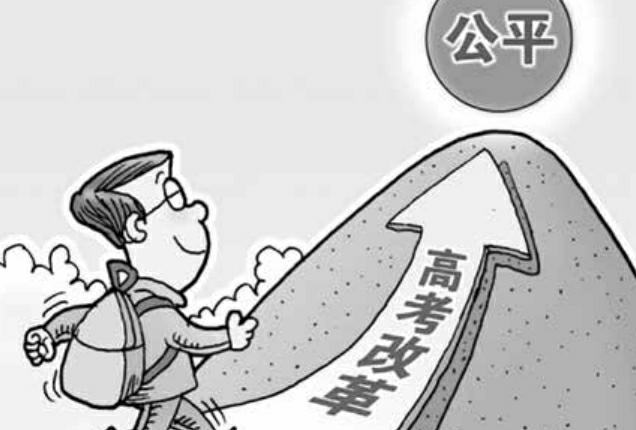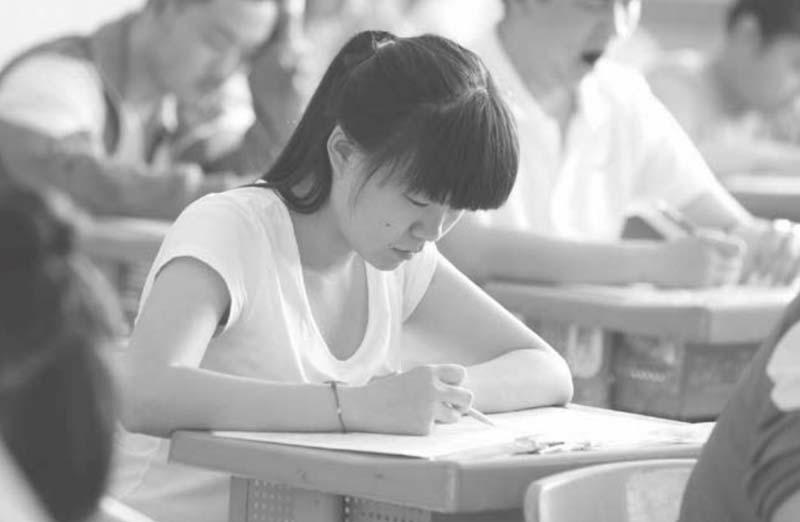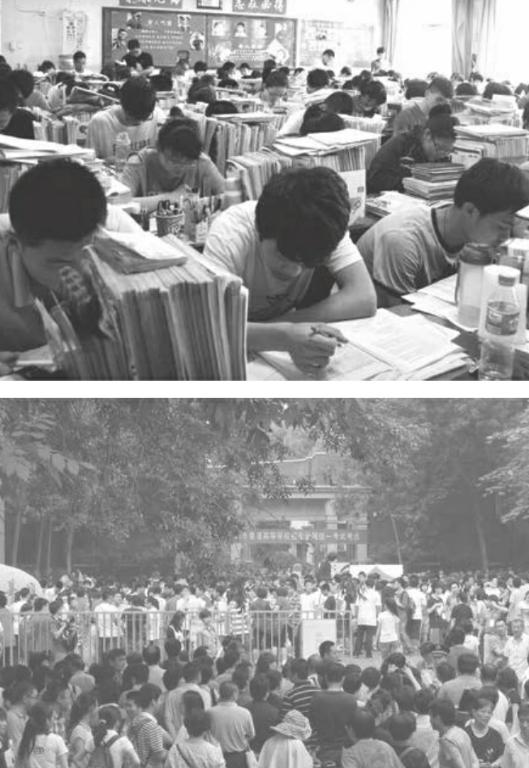Neglected Truth of Gaokao Enrollment:More Difficult to Enroll Satisfactory Students
2016-07-08
After Hubei and Jiangsu Education Bureaus and State Education Department promise there are no such things as reduced enrolling plans, the quota battle of Hubei and Jiangsu provinces cease finally and public discussion gradually returns to the quality of students outside territory provinces.
Professor Sun Dongdong from Beijing University, consecutively participating in Gaokao (National College Entrance Examination) enrollment for over 20 years, advises that what concerns people should be which part of quota is to be adjusted and what structures are of large enrolling provinces. To his knowledge, there has been growing difficulties for research-oriented universities to enroll top students, and the Gaokao reform scheme pays more attention to reducing test subjects with simplified tests, which could be unfavorable for nurturing comprehensive talents or per-sonalized talents. The year 2017 is going to be the starting year of implementing new Gaokao reform scheme, at present over 20 provinces have launched reform schemes where “3 plus 3 selected from 6” becomes the mainstream.
There is too much waste of enrolling plans. Professor Sun emphasizes more concern should go to the enrolling status quo. He says:“There are lots of enrolling plans wasted in some provinces, and the matriculation rate of the third-batch enrolling students and community colleges is very low, which leads to quota relocation to students from middle and west China.”
Related documents show that admission rate of universities increases year by year as numbers taking Gaokao fall, and the phenomenon of dearth of student pool gradually takes on. Matriculation rate of ordinary universities averages around 90%, the rate of some universities even falls below 70%. But the percentage is still rather conservative. It is known that the matriculation rate of third-batch enrolling students in many regions all below 50%, and unpopular majors opened by some universities only have matriculation rate of less than 30% such as Agriculture, Petroleum Geology, etc. Recently, some provincial education authorities regulate that universities with matriculation rate below 70% will reduce enrolling plans for the next year.
In effect, it shows the current system of enrolling plans cannot be accommodated to the supply and demand any more. Researcher Mr Chu from Na- tional Institute of Education Sciences expresses that the system of enrolling plans is where the entire problem arise. Actually, the central government mentioned in its document of 2013 that enrolling system reform should be carried forward and the separation of enrolling and test should be discussed.endprint
The reform direction of the central government includes that the proportion of territory enrolling should be strictly controlled. According to the document published in 2014, universities directly owned by Ministry of Education shall announce their quota distribution principles and methods in public, reasonably confirm enrolling plans by province and strictly control the proportion of territory enrolling.
As Gaokao reforms are progressing, reform achievements in some provinces are not recognized by universities. President of Test Research Institution of Beijing University, Ms Qin, once made comments on the reform of Zheijiang province that the weight of Chinese, Mathematics and English is too high and the basic education of Physics, Chemistry, Biology, etc. will be impaired.
It becomes more difficult to enroll students. Mr Sun says: “Some universities, especially research ones, have somewhat reduced Unified Enrollment quota in recent years as education reforms have made students fail to perform well on some subjects. But instead, the Autonomy Enrollment quota has increased tremendously as this model could reflect better students` comprehensive abilities.”
Since State Council launched Implementation Advice on Deepening Test Enrolling System Reform in Sept of 2014, provinces have introduced Gaokao reform schemes in succession and totally 23 provinces have done so as far. It is understood that Jiangsu Gaokao will implement new scheme next year with the model of “3 plus 3”, that is Chinese, Mathematics, and English, and three others selected from Politics, History, Geography, Physics, Chemistry and Biology. Shanghai will implement “3 plus 3 selected from 6” next year and this goal is very good which could solve the problem of testing high school graduates but could also lead to insufficient master of all subjects if students stop to some subject in their third grade.
In the eye of Mr Sun, Gaokao shouldn`t only be limited to the enrolling quota but should concern more about deep problems of basic education. Basic education requires broad knowledge and individuality, and the current reform focuses on reducing students` burden by cutting test subject, which is actually wrong. Experiments of new courses and new Gaokao reform schemes have been made in succession in some provinces since 2004, and different provinces have different reform contents and progresses. One goal of course reforms should be better feedback from high schools, but Mr Sun comments that it becomes harder to enroll satisfactory students in Beijing University as an example.endprint

One survey was once conducted by the Office of Teaching Affairs in Beijing University, and the result showed that the comprehensive performance of students enrolled through headmasters` recommendations and independent enrolling is better than those enrolled through Gaokao. In the viewpoint of Mr Sun, one the two reasons is simplified tests make the differentiation among students narrows. The other reason is there is a great number of restudy students in large students sourcing provinces, which impacts the distribution of high schools` enrolling plans to some degree. More restudy students means more risks of allocating enrolling plans as universities will judge that potentials of these restudy students are already limited.
There are only five provinces implementing self-made examination paper, and Jiangsu is one of them. During the gossip of reducing enrolling plans, parents complained the big difficulty of Gaokao tests as their children lost the chances of going to top universities as other provinces. There have been constant disputes for years over whether adopting same Gaokao tests. Some ad- vocates same tests as this may be more scientific and fairer.
The direction of deepening test enrolling system reform is to give students more rights of choice and autonomy. Minister of Education Dept, Mr Yuan, says that more provinces are using same papers as self-made examination papers have caused inconsistent test qualities and the problem of high cost making tests becomes severer. But Mr Sun holds different opinions and he thinks different provinces have different education qualities and same papers doesn`t necessarily mean the balance of education.
It was reported that the government has been increasing provinces using same papers since 2015 and Shaanxi, Fujian, Hubei have joined the queue. The minister expresses that: “Different provinces use different textbooks and course reforms and education models are also different. In the future, much deeper surveys, researches and comparisons are required to get a more appropriate method to foster a fairer and more scientific examination-making system.” endprint
endprint
杂志排行
中国经贸聚焦·英文版的其它文章
- Ling Jihua Former vice chairman of the CPPCC National Committee indicted for involving in three crimes
- Han Xiancong Former vice chairman of CPPCC in Anhui Province accused of taking bribes over 23.28 million yuan
- Ma Yi Standing secretary of the Henan Provincial Party Committee get promot ed to be the secretary of Zhengzhou Municipal Party Committee
- Why do Key SOEs and Banks Remain in the Real Estate Market?
- BAT battle for the Lion-share in Online Ticketing Market
- What Causes the Downfall of Yahoo?
